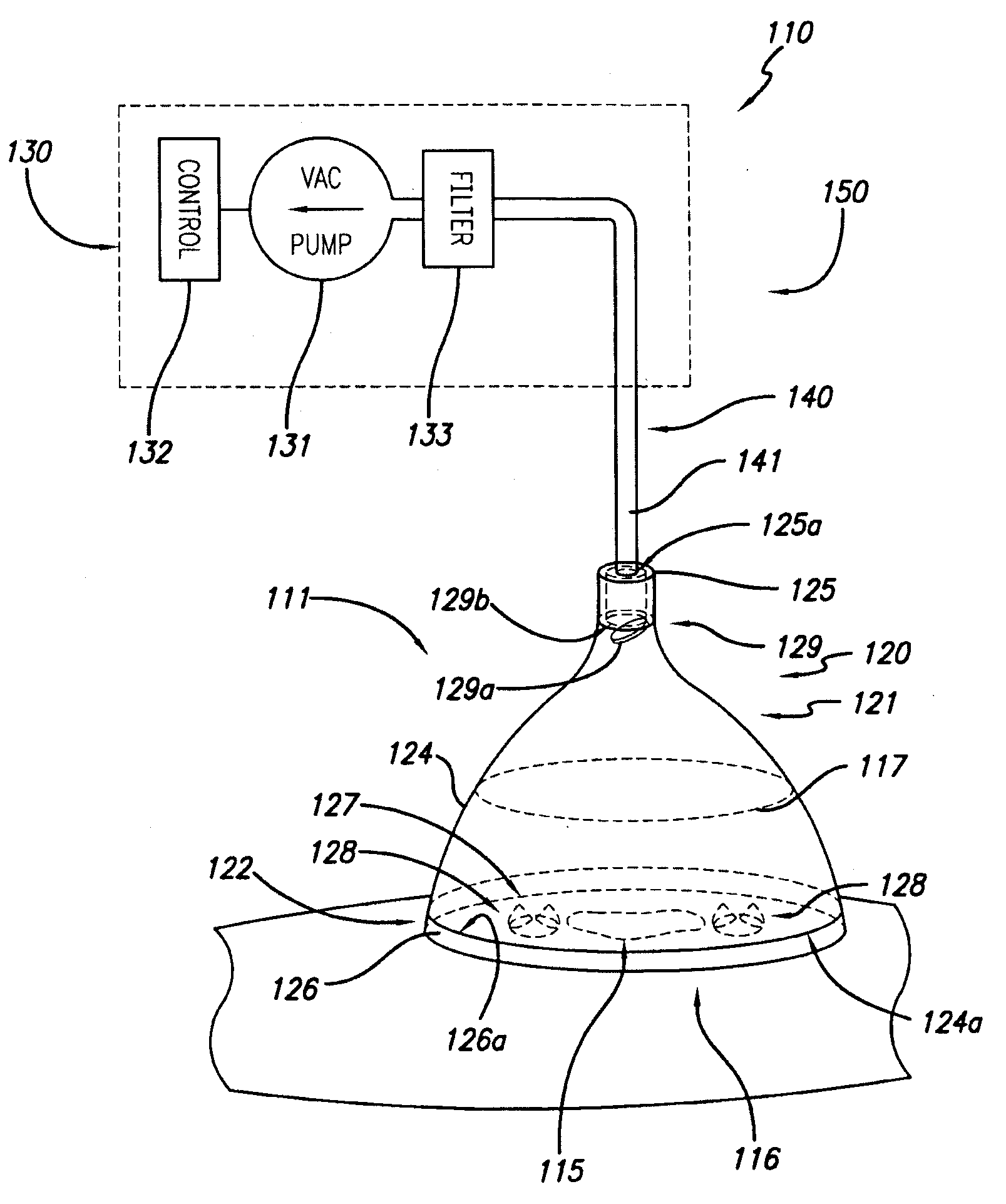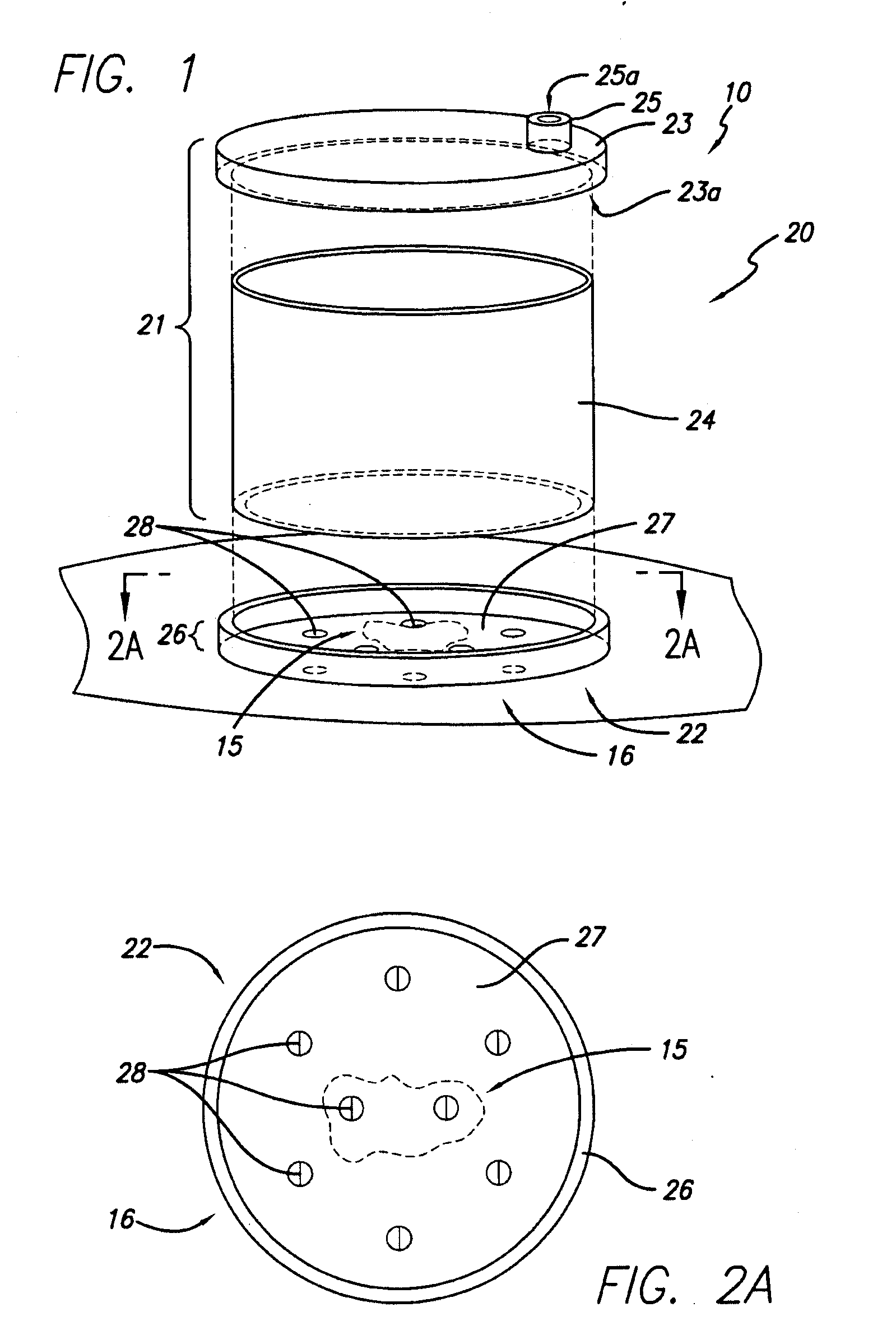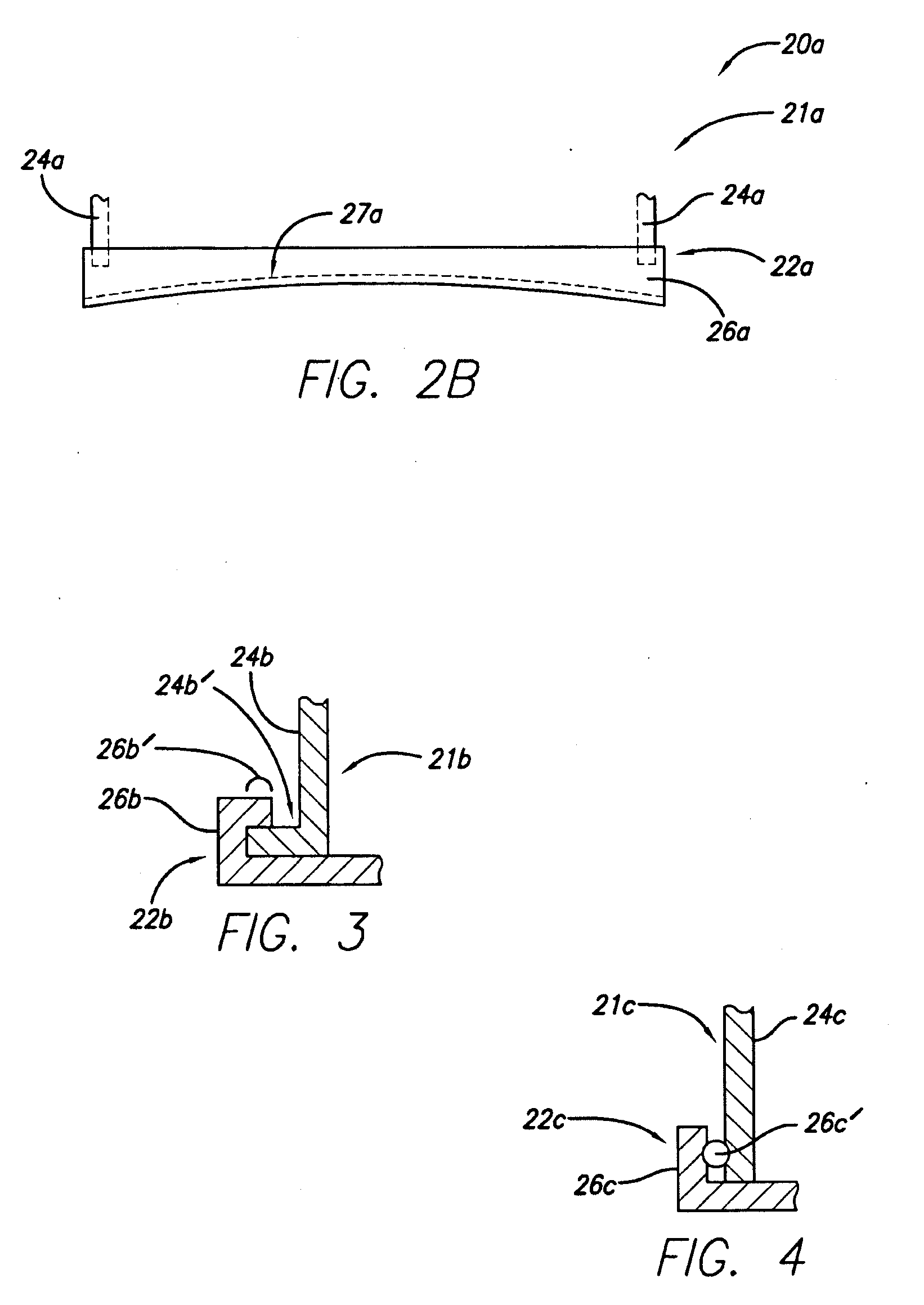Reduced pressure wound treatment system
a wound treatment and pressure reduction technology, applied in the field of wound treatment, can solve the problems of inability to remove the top cup member, the flow control means do not allow the exudate, etc., and achieve the effects of reducing the density of bacteria, reducing the formation of granulation tissue, and fast healing
- Summary
- Abstract
- Description
- Claims
- Application Information
AI Technical Summary
Benefits of technology
Problems solved by technology
Method used
Image
Examples
Embodiment Construction
[0028]In accordance with the present invention, a wound treatment appliance is provided for treating a wound by applying reduced pressure (i.e., pressure that is below ambient atmospheric pressure) to the wound in a controlled manner for a selected time period in a manner that overcomes the disadvantages of currently existing apparatus. One embodiment of a first version of the invention is the treatment appliance 10 illustrated in FIG. 1. FIG. 1 is an exploded perspective view of a cover 20 comprising the treatment appliance 10 from the side of and above the cover 20 as it appears when applied to a portion of the body 16 of a patient surrounding a wound 15. In this embodiment, the cover 20 is comprised of a top cup member 21, an interface member 22, and interface attachment means, which are described in more detail below, to attach the interface member 22 to the top cup member 21. This embodiment also comprises sealing means to seal the cover 20 to the portion of the body 16 surroun...
PUM
 Login to View More
Login to View More Abstract
Description
Claims
Application Information
 Login to View More
Login to View More - R&D
- Intellectual Property
- Life Sciences
- Materials
- Tech Scout
- Unparalleled Data Quality
- Higher Quality Content
- 60% Fewer Hallucinations
Browse by: Latest US Patents, China's latest patents, Technical Efficacy Thesaurus, Application Domain, Technology Topic, Popular Technical Reports.
© 2025 PatSnap. All rights reserved.Legal|Privacy policy|Modern Slavery Act Transparency Statement|Sitemap|About US| Contact US: help@patsnap.com



